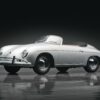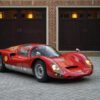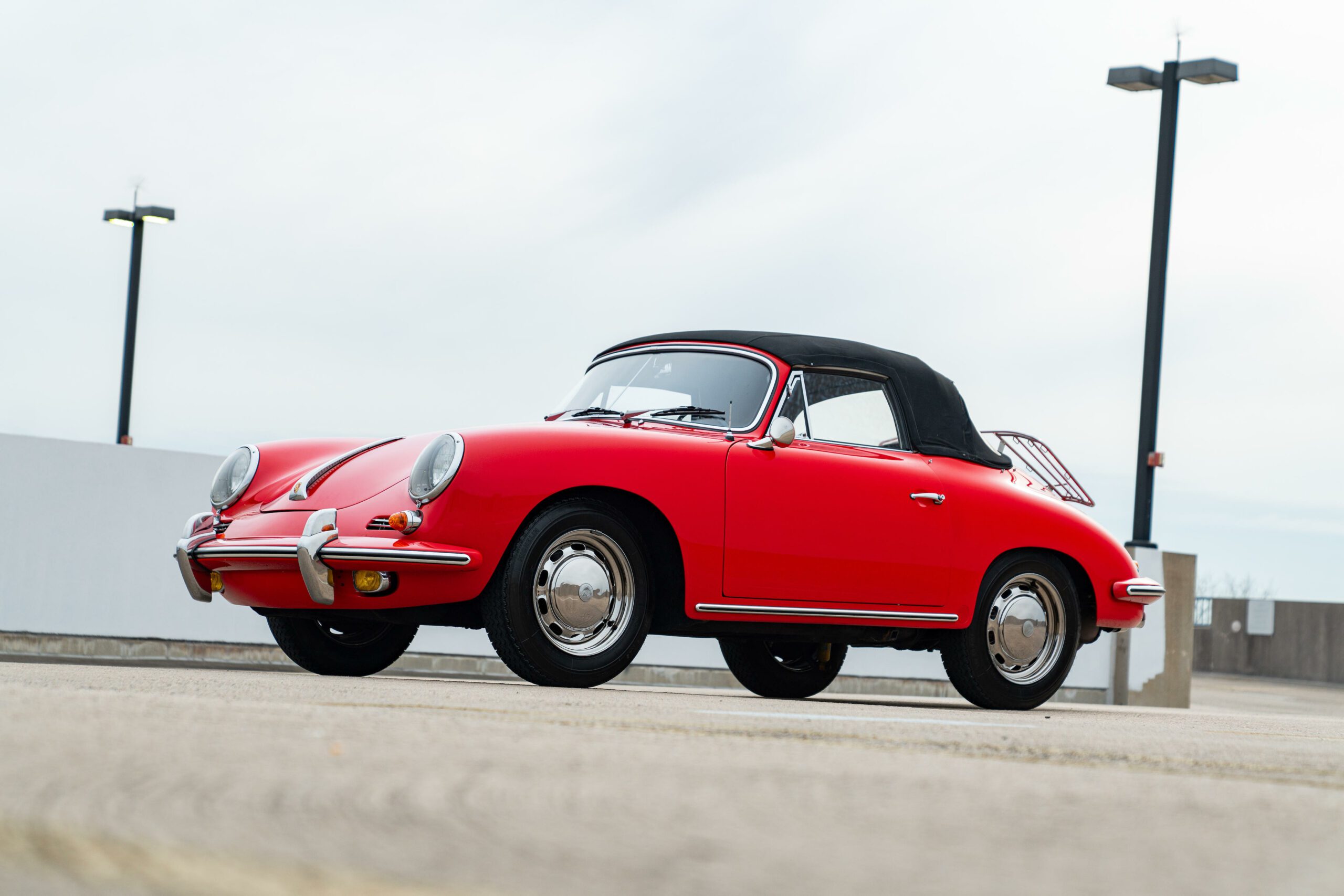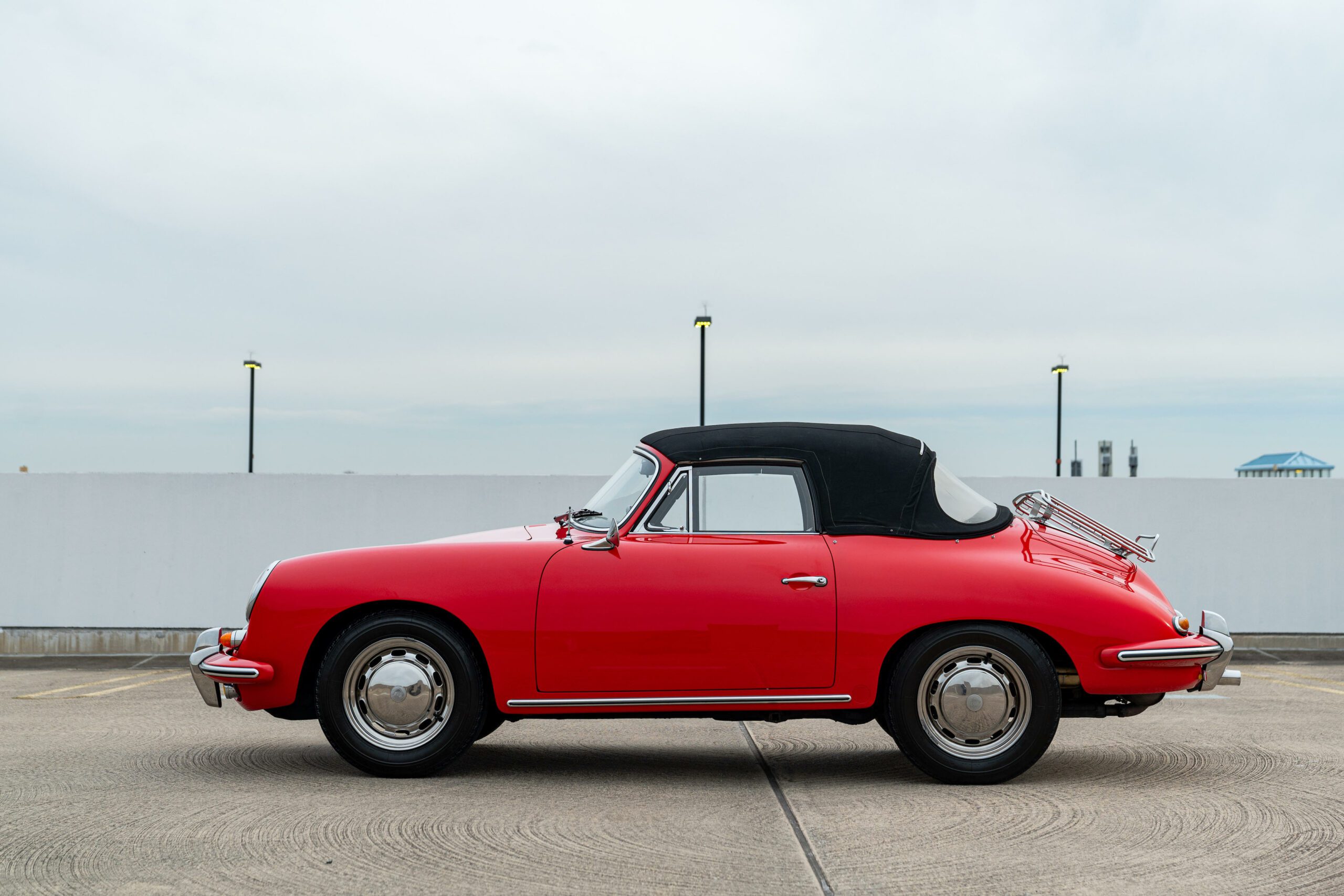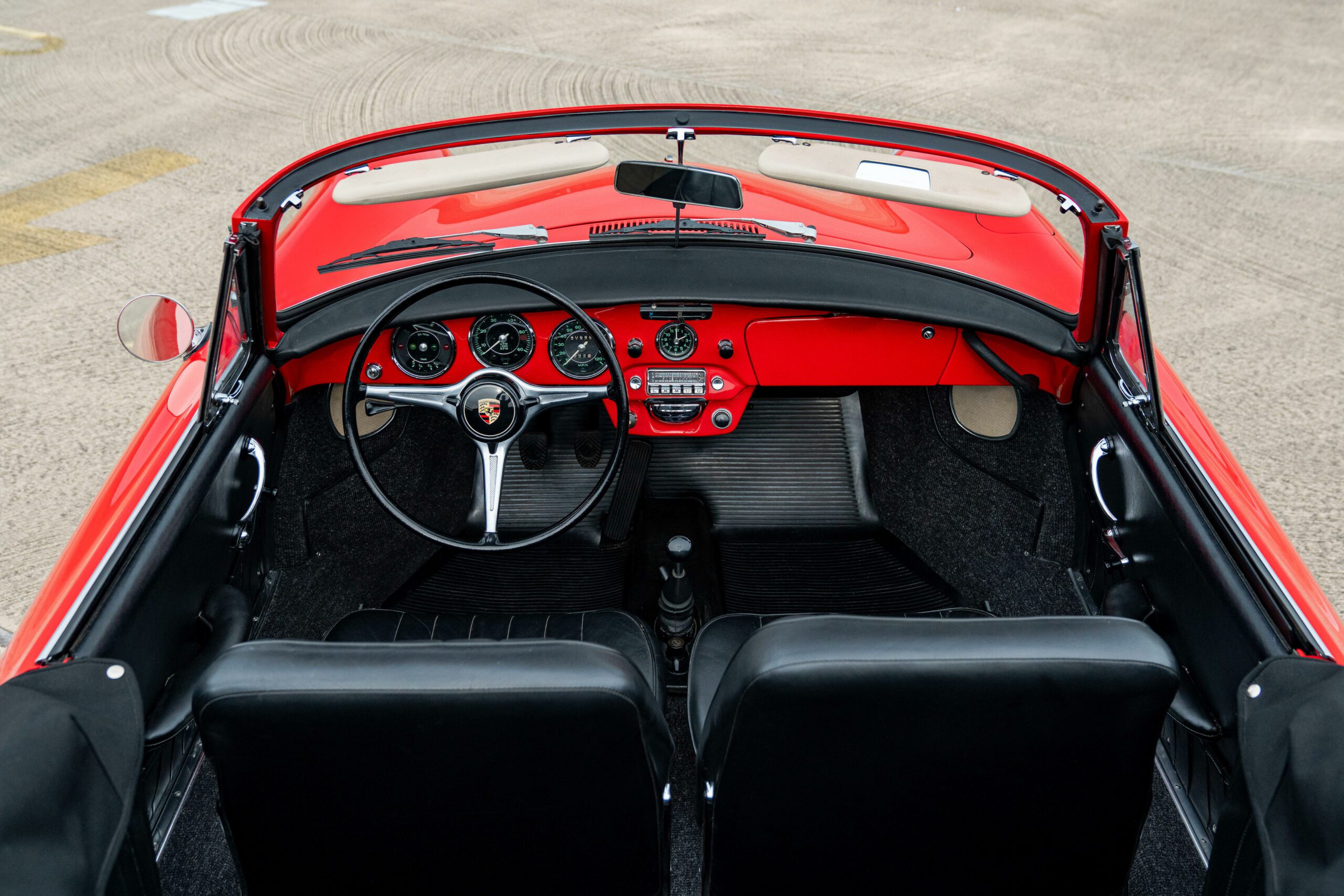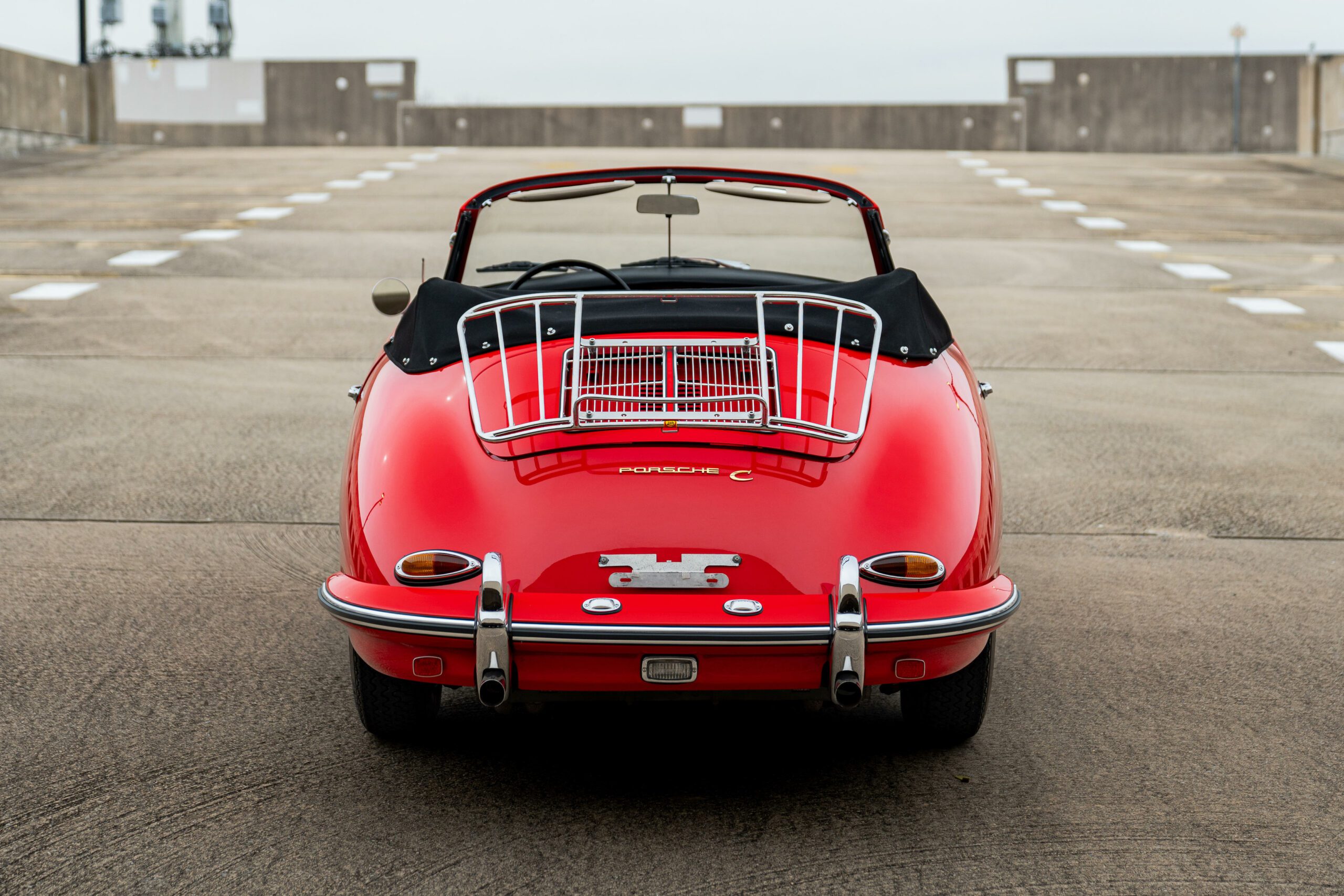Cabriolets had been part of the Porsche 356 lineup since its inception, but it was the Speedster, introduced in 1954 after a successful debut of 15 special roadsters in the USA, that truly made an impact. The original Reutter-bodied Speedster was phased out in 1958 in favor of the more refined Convertible D, distinguished by its larger windscreen and winding side windows.
Production of cabriolet bodies was distributed among various coachbuilders, with Reutter handling the majority, supplemented by Karmann of Osnabruck, Drauz of Heilbronn, and d’Ieteren of Brussels. By September 1959, with the arrival of the 356B, Porsche’s iconic sports car had evolved with a one-piece rounded windscreen and larger 15″ wheels. The 356B also marked further styling enhancements and a standardized 1,600cc engine.
The ultimate iteration, the 356C introduced in 1963, boasted four-wheel disc brakes borrowed from the 2-liter Carrera 2, along with various improvements like a new ZF steering gear and a rear compensating spring to refine the swing axle rear suspension. Engine options for the 356C included the 75bhp ‘C’ and 95bhp ‘SC’, with the latter replacing the Super 90.
As the final “C” version rolled out in 1964, cabriolet sales were on the decline. Only 2575 units were produced that year, with a mere 587 more in 1965, making these last convertibles even more sought after by collectors today. Renowned for their luxury and comfort, the 1964 “C” models were capable of sustained cruising at 90 mph. With the addition of four-wheel disc brakes, the driving dynamics of the “C” were further enhanced. The standard “Normal” C engine delivered 75 horsepower, while the high-performance “Super” C churned out 95 horses.
Source: Bonhams


